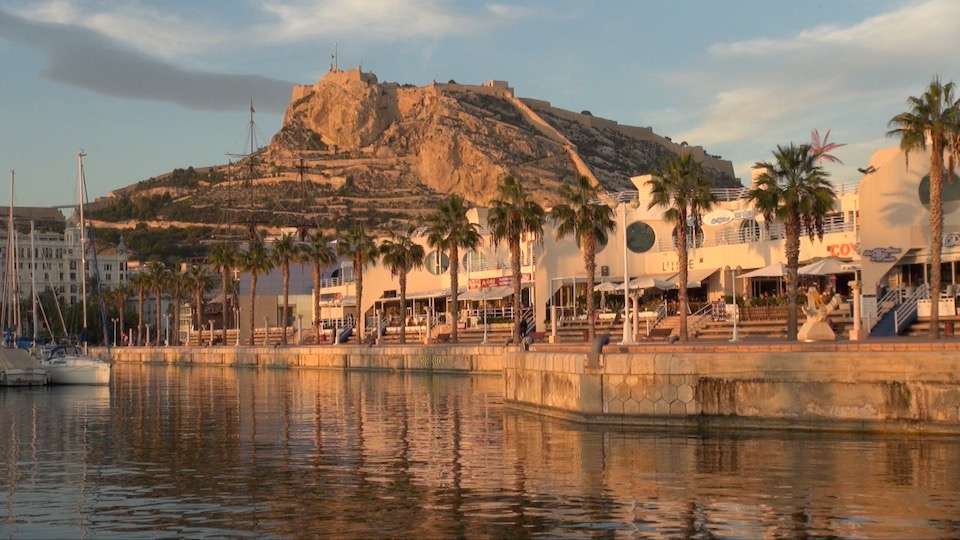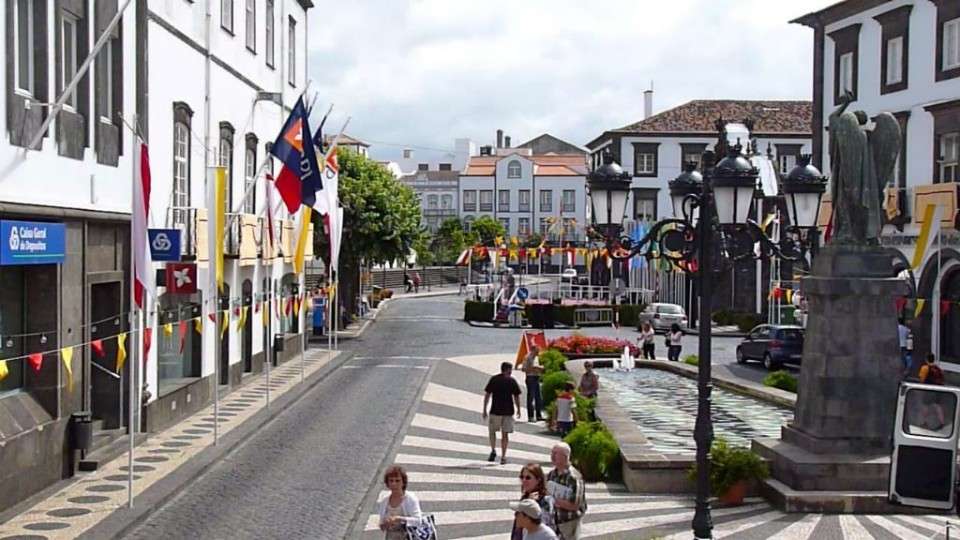Alicante City
Alicante is a port city on Spain’s southeastern Costa Blanca, and the capital of the Alicante province. Its old town, Barrio de la Santa Cruz, has narrow streets, coloured houses and a nightlife scene. From here, an elevator or a steep climb leads to medieval Castillo de Santa Bárbara, set on a hilltop with sweeping views of the Mediterranean coast.
The city is believed to have been founded by the Carthaginian general Hamilcar Barca, who established the fortified settlement of Akra Leuka (Greek: Ἄκρα Λευκή, meaning ‘White Mountain’ or ‘White Point’), where Alicante stands today. It was later conquered by the Romans who renamed it Lucentum.
In medieval times, Alicante became a major Mediterranean trading station, exporting rice, wine, olive oil, oranges, and wool. The city has become a hub of tourism directed to the beaches of the Costa Blanca.
The Puerto de Alicante is the harbor where cruise ships dock, home to seafood restaurants and nightclubs. City beaches include central Playa del Postiguet (near the old town) and Playa de San Juan, which has restaurants, bars, and sports facilities.
The Museo Arqueológico Provincial de Alicante has collections of prehistoric and Roman artifacts. Housed in the 17th-century Casa de La Asegurada, the Museo de Arte Contemporáneo displays works by Dalí and Picasso.
Santa Bárbara Castle
City views spread from this hilltop, 9th-century Muslim castle, with history museum & guided tours. On top of Mount Benacantil at a height of 166 metres, there is one of the largest medieval fortresses in Spain, built in the ninth century by Muslims. An amazing view of town and harbour.
Explanada de España
Near the port, the marble-paved Explanada de España is a pedestrian walkway popular for paseos, or evening strolls. A wide 500-meter promenade running parallel along the wide waterfront line, along the port. It was built in the first half of the twentieth century, it consists of a marble corrugated mosaic of red, black and white alternately.
Playa del Postiguet
Sprawling, urban sand beach for swimming & sunbathing with a bi-level promenade, palm trees & cafes.
Basilica of Santa Maria, Alicante
The Basilica of Santa Maria is the oldest active church in Alicante, Spain. It was built in Valencian Gothic style between the 14th and 16th centuries over the remains of a mosque. The basilica is composed from a single nave with six side chapels located between the buttresses.
Begun during the 14th century on top of the remains of an old Moorish mosque, construction was completed in the 16th century, and incorporates Gothic and Baroque stylistic elements in its structure. The main entrance to the church is especially notable for its elaborate Baroque decorative elements; inside the Gothic choir and Rococo altar are noteworthy, along with the Baroque organ from 1653. The exterior still bears traces of bombardment by French forces in the 18th century.
Port of Alicante
The Port of Alicante is a seaport in Alicante, used for commercial and passenger traffic.
San Juan Playa
Popular beach with lodging & dining. Scenic stretch of white sand with hotels, restaurants & bars, plus beach volleyball & water sports.
Mercado Central de Alicante
Bustling food market with many vendors. Popular, long-running market with vendors selling produce, seafood & meats, plus cheeses & bread.
Town Hall of Alicante
City hall has an art piece by Salvador Dali just inside the entrance.
MUSHROOM STREET
Calle de Las Setas/Calle San Francisco
In late 2013, the mayor of Alicante, Sonia Castedo, decided figures of mushrooms of large dimensions with floors painted green and yellow. Despite the initial controversy (the cost of the investment was about 60,000 euros), the street attracted the attention of tourists and increased the opening of new businesses. Since then, the street is popularly known as Calle de las Setas.
Museums and Galleries
Museu Arqueològic Provincial d’Alacant (Archaeological Museum of Alicante) founded in 1932, has avant-garde design and uses modern audiovisual techniques, with more than 80,000 pieces found in local archaeological sites. Shows educational movies about the history of Alicante area from the Stone Age, through Iberian and Roman eras, to the medieval times.
Museu de Belles Arts Gravina (Palau Gravina) This local fine arts museum, housed in an 18th-century palace, has some excellent artworks by Spanish artists, displayed over 3 floors. Take time to watch the video presentation Black and White about historic Alicante.
Museu d’Art Contemporani d’Alacant (Museo de La Asegurada) On display there are a few works by world-famous artists of the 20th century: Pablo Picasso, Georges Braque, Julio González, Juan Gris, Joan Miró; as well as art collections by two local artists Eusebio Sempere and Juana Francés.
Museu de la Universitat d’Alacant (Museo de la Universidad de Alicante) Opened in 1999, this ultra-modern museum is devoted to contemporary art and hosts special exhibits as well as concerts and other events.
Museu d’Aigües d’Alacant (Alicante Water Museum) The museum is adjacent to the Pozos de Garrigós (Garrigós Wells), a collection of wells dating from the Moorish period to the 16th century, and in use until 1898. Exhibits in the three-floor modern museum illustrate the history of water resources and distribution in the city and the area.
Festivals
Fogueres de Sant Joan (Hogueras de San Juan / Bonfires of Saint John). Around the 23 June. The most important festival in the city, with preparations beginning a week beforehand. Throughout Alicante, enormous monuments (up to and above 3 stories tall) are constructed and burned at the end of the festival during the night of 24th to 25th, after the shooting off of the very large “Palmera” firework from the top of the Castillo de Alicant. The explosion takes the shape of palm tree leaves (hence the name, Palmera). This is the symbol that begins the burning of the Hogueras monuments, which lasts into the later hours of the night. After that, a week of night fireworks continues on the beach. During the festival, you won’t have to go far to find music, drinks, and dancing, that all usually lasts until the early mornings.






